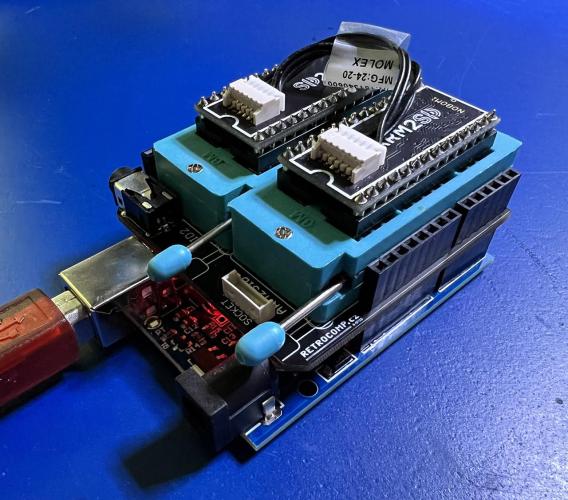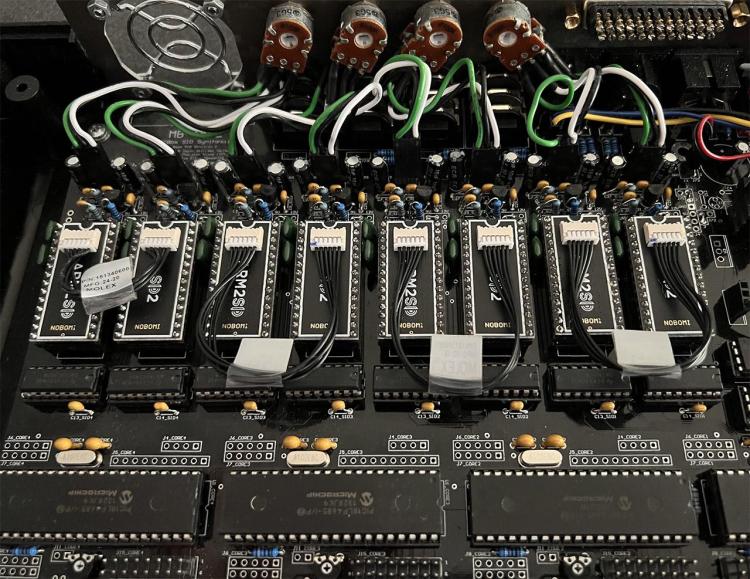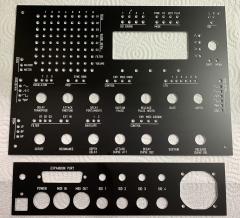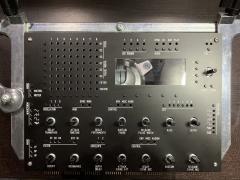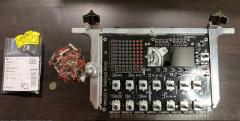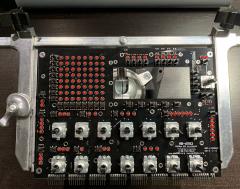-
Posts
274 -
Joined
-
Last visited
-
Days Won
26
Content Type
Profiles
Forums
Blogs
Gallery
Everything posted by dwestbury
-
I'd love to experiment with the STL file(s) if you're willing to share. A lovely build, with some nice innovations. Cheers!
-

sammichSID Bulk Order Run #29/#30 - preorder form online
dwestbury replied to nILS's topic in Bulk Orders
If you made your own PCBs using the available schematics, then I think you may be free to sell them to others here, since they're your own derived work. However, you cannot sell the finished and fully assembled sammichSID or MB-6582 synths as commercial product without express permission. Someone else here may want to jump in and correct me if I got that wrong... -

sammichSID Bulk Order Run #29/#30 - preorder form online
dwestbury replied to nILS's topic in Bulk Orders
As far as I know, Modular Addict is still the official source for MIDIBox PCBs... https://modularaddict.com/shop-by-brand/midibox-ucapps-de -
Someone on YouTube recently posted a nice and detailed side-by-side sound comparison of an 8580R5 with an ARMSID. The ARMSID is running the latest firmware, so the tests should be accurate.
- 88 replies
-
- sid replacement
- sid clones
-
(and 4 more)
Tagged with:
-
In an older post (referenced below) there was a lot of talk about the different SID clone options available and the pros and cons of each. Somewhere in that thread I put my own cards on the table and doubled-down on the ARMSID, because IMHO it provides very good sound emulation for my synths and my Commodore systems. Well, fast-forward to today (a couple years later), and I'm still happy to say that I use the ARMSID and ARM2SID regularly. In fact, I did a quick inventory check and realized that I've purchased about ~25 of them over the last 2 yrs, for various builds and repairs... In that same older forum post, I made a reference to the ARMSID Shield, which is an Arduino Uno add-on, that lets you test and configure your ARMSIDs, as well as manage firmware updates and even play some SID tunes to test everything out. This shield basically lets you do everything with the ARMSID that you would have needed a C64 computer for in the past. I thought it would be useful for anyone that is thinking about using the ARMSID / ARM2SID for their MIDIBox SID builds, to have a quick and handy reference to help them get setup. https://docs.google.com/document/d/1B_xzXlLjq3NbKnOrhIoJ5PrlVIhlsD_aASEhB0CWK90/edit?usp=sharing Questions & comments are welcomed... Cheers
-
Here's the gerbers for the MB-6582 panel set pictured in this thread... Please credit @listen202 and @Manu29 for their efforts... _MB6582_Panel_L202-Manu.zip _MB6582_Rear_L202-Manu.zip
-
Still some sources for 18F4685's available. https://www.ebay.com/itm/175071463256?_trkparms=ispr%3D1&hash=item28c3128758 I have spares too If you come up short (either pre-programmed or un-programmed)...
-
Ich könnte auch helfen, aber ich spreche kein Deutsch und lebe in den USA. Ich habe vorprogrammierte PIC-Chips.
-
Glad to hear that was helpful... Best of luck and enjoy your synth...
-
If you scan these forums you'll see a long stretch of messages from me circa 2019 when I was working on my first MB6582 and struggling to get a full set of PICs programmed. Much like everything else in life, once I figured out what I was doing, it was actually fairly easy and straight forward to get the build / programming process to work reliably. In the meantime I've made countless sets of PICs for my other builds and for others here on the forums, so I can attest to the process I'll link to below... https://1drv.ms/w/s!AtmSvwylfFJaggnN1TtalEzGQK1C?e=uxNFRo I'm actually using a much faster approach now, with fewer steps, but I don't know when I'll have time to document the differences...
-
The 8580 is, for all intents and purposes, exactly the same as the 6582 (9v, modern filter, stabile oscillators, etc.). There are still plenty of 8580s up for grabs on eBay or Etsy these days, mostly from Germany, Poland or Hungary. https://www.ebay.com/itm/284485136287 https://www.ebay.com/itm/165163711893 Although, I think it's fair to say that some of modern SID Clones have become "respectably close" and "capable enough" to be taken seriously more music making. The choice is highly personal, so no wrong answers - Just "do you"
-
Cool - glad to hear it helped - thanks for confirming... I've edited my post above to include the beta firmware for anyone else that runs into the issue.
- 88 replies
-
- sid replacement
- sid clones
-
(and 4 more)
Tagged with:
-
@m00dawgyou might want to connect with @Martin Lukasekfrom Retrocomp. There’s a Beta firmware for ARM2SID that contains some fixes and features for the MB-6582 (see below). Faster start Corrected FM Drums Faster interrupt response, when CS requests come into two sockets independently Auto-switch to mono mode is disabled by default (adjustable in the config tool) a2sid313beta3_nomono.zip You'll need a working C64 to use the above PRG file. ARM2SIDArduinoUpdaterFirmware_312-313b1-313b3.zip You'll need the Retrocomp Arduino shield to use the updater above (this was covered earlier in this thread). He's very interested in feedback from the MIDIBox SID community...
- 88 replies
-
- sid replacement
- sid clones
-
(and 4 more)
Tagged with:
-
I think you made the point yourself. The SID isn't running a DSP, it has an actual analog filter, which for all its warts, has still enabled all those chiptune musicians of yesteryear to produce some amazing and iconic tracks. I doubt anyone would argue with you regarding the quality of the SID's filter, relative to the higher quality and more modern options out there. Personally, I like the consistency and predictability I get by using an automation controlled filter within my DAW. It's definitely a preference thing. Further up in this thread I did a side-by-side with the 8580, the ARMSID and the SwinSID Ultimate. IMHO, they all sounded good in isolation, but comparatively, the real SID has a bit more air and sparkle in the higher frequencies, which is part of the character I love hearing. Guessing that this could be replicated with more complex DSP programming, if it was really desired. Finally, doubling down on some of my earlier comments, I've been messing with ARMSIDs for several months now and I definitely think they're a great alternative. I'm buying them in batches these days, for retro C64 repairs and MIDIbox builds...
- 88 replies
-
- sid replacement
- sid clones
-
(and 4 more)
Tagged with:
-
I don't think complete schematics were ever published for the MB6582 variant of the MIDIBox SID v2, but all of the schematics for the individual modules are available here: http://www.ucapps.de/midibox_sid_manual.html The MB6582 is a pretty faithfully merged combination of the original modules, so I was always able to refer to them when I ran into issues...
-
I built my MB-6582 last year, so relatively recently... In the process I pieced together a few handy references that helped me with my build... Good luck with yours... Planning the cost of a build, based on various component options: PCB Sets are still available here: https://modularaddict.com/shop-by-brand/midibox-ucapps-de Nice pre-made Aluminum panel sets available here: http://thebeast.co.uk/?product_cat=midibox As a bargain basement alternative to aluminum, you could have panels fabricated as if they were PCBs, which saves a ton: If real SIDs are too difficult to find and/or too expensive, take a look at the best clone options: How to program your Microcontrollers: ...Or just buy some pre-programmed chips: Where to get the "Just Right" power switch: Which SID filter capacitors to use: A useful voltage testing guide: There are many power supply options available, but this one is by far the easiest: THE definitive guide for making the control surface: A nice little PCB that simplifies Char LCD Wiring: A useful way to join the boards together: Optional Encoder Backlighting:
-
I never ran into that particular issue, but you nay want to confirm whether your MIDI Interface is on the "whitelist" of supported ones for MIOS.. http://www.midibox.org/dokuwiki/doku.php?id=midi_interface_whitelist
-
Quick update: As much as I love the panels from @julianf I eventually realized that you can have professional looking panels fabricated as a PCB, using Gerber file exports from a KiCAD drawing. The idea occurred to me when I realized that standard 2 layer PCBs are ~1.6mm thick, with rigid copper on the top and bottom layers, which is pretty close to the 1.5mm aluminum panel standard. What's great about this approach is, you can have tons of PCBs manufactured for dirt cheap prices (as in 10 for $35 USD), versus paying $125-$275 to have aluminum machined and inlayed... Some food for thought for the budget conscious...
-
-
-
@Rio Given that the ARMSID is basically a STM32 MCU, I would think the filter has to be a digitally emulated with DSP algorithms. With that said, you should be able to expect all ARMSID instances to be "digitally consistent", with no wear or degradation concerns over time. @Martin Lukasek thoughts?
- 88 replies
-
- sid replacement
- sid clones
-
(and 4 more)
Tagged with:
-
Congrats on the progress! Exciting times ahead! Cheers



